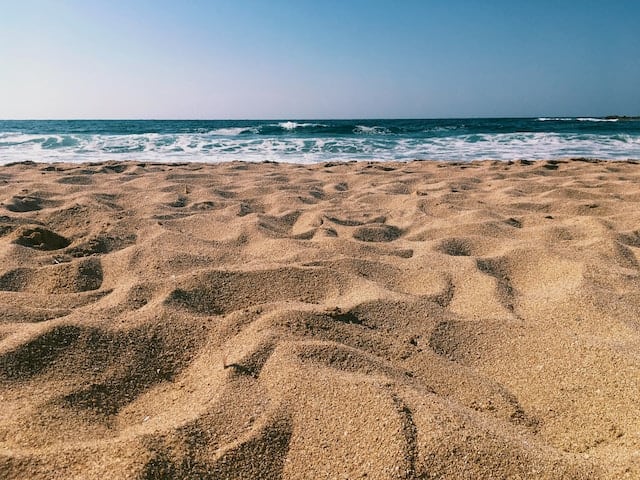Beach sand is a popular choice for gardeners looking to improve soil drainage and aeration. However, not all sand is suitable for plants, and using the wrong type of sand can actually harm plant growth. Before adding beach sand to your garden, it’s important to understand the potential risks and benefits.
Understanding the composition of beach sand is key to determining its suitability for plants. Beach sand is typically made up of a mixture of minerals, including quartz, feldspar, and mica. However, it may also contain salt, which can be harmful to plants. In addition, beach sand may not provide the necessary nutrients that plants need to thrive.
Key Takeaways
- Not all beach sand is suitable for plants, and using the wrong type of sand can harm plant growth.
- Beach sand may contain salt and may not provide necessary nutrients for plants.
- Alternatives to beach sand for plants include horticultural sand and potting mixes with added sand for improved drainage.
Check out these other top posts in this category:
- Can I Use African Violet Soil for Other Plants?
- Can I Use African Violet Fertilizer on Other Plants?
- Can I use a reptile heat lamp for plants?
Understanding Beach Sand

Beach sand is a type of sand that is found on the shores of oceans, seas, and lakes. It is composed of various minerals, including quartz, feldspar, mica, and other minerals that have been eroded and washed away from rocks. The texture of beach sand can vary depending on the location and the type of rocks that it was derived from.
Beach sand is typically made up of fine to medium grains, but it can also contain larger grains of sandstone, granite, or other rocks. The color of beach sand can vary from white to black, depending on the composition of the minerals.
One important thing to note about beach sand is that it can contain high levels of salt. This is because it is located near the ocean, which has a high salt content. The salt can be harmful to plants if it is not washed out before use.
Despite its high salt content, beach sand can be useful in gardening. It can improve the texture of soil and help with drainage. However, it is important to use beach sand only for plants that are adapted to the salty environment.
Why Not All Sand is Suitable for Plants
While sand is a common ingredient in many plant soils, not all types of sand are suitable for plants. Beach sand, for instance, may not be the best option for plants due to its high salt content. Salt can accumulate in the soil and damage the plant’s roots, leading to stunted growth or death.
In addition to salt content, the texture of the sand can also affect plant growth. Sand that is too fine can compact easily, making it difficult for water and air to penetrate the soil. This can lead to poor drainage and waterlogged roots, which can cause root rot and other problems.
Furthermore, some types of sand may not contain enough nutrients to support plant growth. While sand can improve drainage and aeration, it does not provide the necessary nutrients that plants need to thrive.
Therefore, it is important to mix sand with other soil amendments, such as compost or peat, to provide a balanced growing environment for plants.
When using sand in potted plants for containers, it is essential to choose the right type of sand. Coarse sand is preferable, as it allows for better drainage and aeration. Additionally, it is important to avoid using sand exclusively in the potting mix, as this can lead to poor nutrient availability and compaction.
The Effect of Salt in Beach Sand
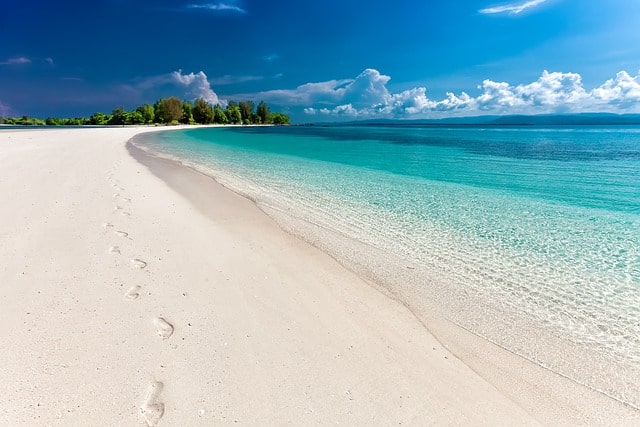
Beach sand is a common type of soil that people may consider using for their plants. However, it is important to understand the effect of salt in beach sand on plant growth.
Salt is a natural component of beach sand and can be harmful to plants. When salt accumulates in the soil, it can create an inhospitable environment for plant growth. One of the main effects of salt in beach sand is that it can dehydrate the plants by drawing water out of their roots. This can lead to stunted growth, wilting, and even death.
Additionally, the high salt content of beach sand can negatively impact the nutrient uptake of plants. Salt can compete with other essential nutrients like potassium, calcium, and magnesium, making it more difficult for plants to absorb these nutrients. This can lead to nutrient deficiencies and further hinder plant growth.
Furthermore, the salt in beach sand can also affect the soil structure and water retention capacity. Salt can cause soil particles to clump together, reducing the soil’s ability to hold water. This can lead to poor drainage, which can cause root rot and other plant diseases.
Understanding Soil Composition
Soil is a complex mixture of organic and inorganic materials that provide a medium for plant growth. Understanding soil composition is crucial for gardeners who want to create optimal growing conditions for their plants.
Soil is made up of three main components: mineral particles, organic matter, and pore spaces. The mineral particles are the sand, silt, and clay that make up the bulk of the soil.
Organic matter includes any plant or animal material that has decomposed in the soil. Pore spaces are the empty spaces between the mineral particles and organic matter that allow air and water to move through the soil.
The ratio of sand, silt, and clay in soil determines its texture. Sandy soil has a high proportion of sand and drains quickly, while clay soil has a high proportion of clay and retains water. Loam soil is a balanced mixture of sand, silt, and clay that provides good drainage and water retention.
Organic matter is important for soil fertility because it releases nutrients as it decomposes. It also helps to improve soil structure by binding mineral particles together and creating pore spaces for air and water.
Minerals in soil provide essential nutrients for plant growth. Nitrogen, phosphorus, and potassium are the primary macronutrients that plants need in large quantities. Other minerals, such as calcium, magnesium, and sulfur, are also important for plant growth but are needed in smaller amounts.
Soil structure refers to the arrangement of mineral particles and pore spaces in the soil. A well-structured soil has a good balance of pore spaces and mineral particles, which allows for good aeration and water retention.
Aeration is important for plant growth because it allows roots to breathe and access oxygen. Soil that is too compacted or has poor structure can lead to poor aeration and root development.
Water retention is also important for plant growth because plants need a consistent supply of water to thrive. Soil that drains too quickly can lead to drought stress, while soil that retains water for too long can lead to waterlogged roots and root rot.
Alternatives to Beach Sand for Plants
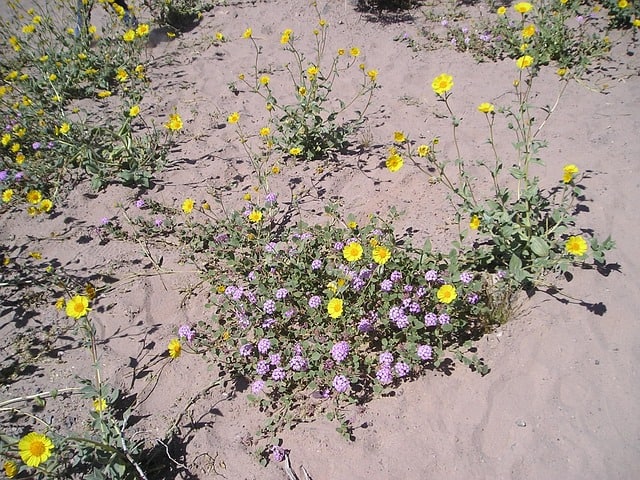
While beach sand may seem like a convenient option for gardening, it is not always the best choice. The salt content in beach sand can be harmful to plants, and it may also contain other impurities that can negatively impact soil quality.
Fortunately, there are several alternatives to beach sand that can provide the necessary drainage and aeration for healthy plant growth.
1. Horticultural Sand
Horticultural sand is a type of sand that is specifically designed for gardening. It is usually made from crushed quartz or silica and is free of salt and other impurities.
Horticultural sand is ideal for improving soil drainage and can be mixed with compost or potting soil to create a well-draining growing medium. It is also a good choice for amending heavy clay soils.
2. Sharp Sand
Sharp sand is another type of sand that is commonly used in gardening. It is a coarser sand than horticultural sand and is often mixed with other materials like compost or soil to improve drainage. Sharp sand is also free of salt and other impurities, making it a safe option for plants.
3. Coarse Sand
Coarse sand is a larger-grain sand that is often used for landscaping and construction projects. It can also be used in gardening to improve soil drainage, but it may need to be mixed with other materials like compost or potting soil to create a suitable growing medium. Coarse sand is typically free of salt and other impurities.
4. River Sand
River sand is a natural sand that is often used in construction and landscaping. It can also be used in gardening, but it may contain impurities like silt or clay that can negatively impact soil quality. River sand is usually not recommended for use in potted plants or indoor gardening.
5. Crushed Granite
Crushed granite is a type of stone that is often used in landscaping and construction projects. It can also be used in gardening as a substitute for sand. Crushed granite is free of salt and other impurities and provides excellent drainage for plants.
6. Horticultural Grit
Horticultural grit is a coarse, sharp material that is often used in gardening to improve soil drainage. It is usually made from crushed rock or gravel and is free of salt and other impurities. Horticultural grit can be mixed with compost or potting soil to create a well-draining growing medium.
Role of Sand in Potting Mixes
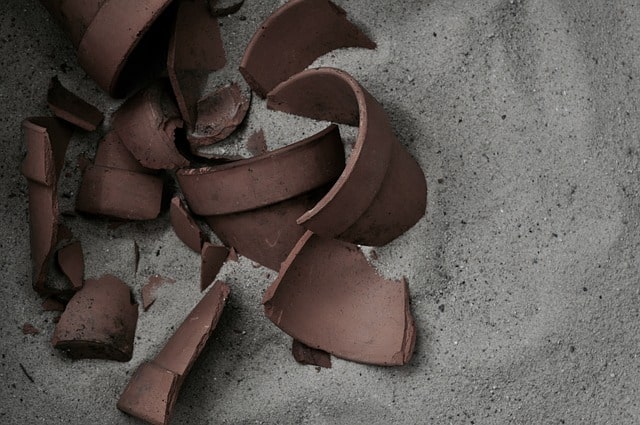
Sand can play an important role in potting mixes for plants. It can improve the texture of the soil, increase drainage, and provide aeration. However, it is important to choose the right type of sand for the potting mix.
When mixed with potting soil, sand can help create a well-draining medium that prevents water from pooling around the roots of plants. This is especially important for plants that are sensitive to overwatering. The sand helps to create air pockets in the soil, which allows water to move through more easily and prevents soil compaction.
The texture of the sand used in potting mixes is also important. Coarser sands, such as river sand or silica sand, are better for mixing with potting soil than finer sands, such as sandpit or builder’s sand. This is because coarser sands provide better aeration and drainage than finer sands.
It is important to note that not all plants require sand in their potting mix. Some plants prefer a denser soil that holds moisture better. In general, plants that prefer dry soil or are prone to root rot benefit from sand in their potting mix, while plants that prefer moist soil may not need sand.
When adding sand to a potting mix, it is important to get the right ratio. A good rule of thumb is to use a 1:3 ratio of sand to potting soil for large plants, such as fruit trees and bird of paradise. For smaller plants, a 1:4 ratio may be more appropriate.
Using Sand for Different Types of Plants
Sand can be a great addition to different types of plants, especially those that prefer well-draining soil. Here are some examples of plants that can benefit from the use of sand:
1. Succulents
Succulents are known for their ability to store water in their leaves, stems, and roots. These plants prefer well-draining soil to prevent root rot. Mixing sand with the potting soil can help improve drainage and prevent waterlogging. However, it’s important to use coarse sand rather than fine sand to avoid compacting the soil.
2. Lavender
Lavender is a popular herb that requires well-draining soil to thrive. Adding sand to the soil can help improve drainage and prevent waterlogging. Lavender also prefers soil that is slightly alkaline, so adding sand can help raise the pH level of the soil.
3. Cacti
Cacti are desert plants that require well-draining soil to prevent root rot. Adding sand to the potting mix can help improve drainage and prevent waterlogging. However, it’s important to use coarse sand rather than fine sand to avoid compacting the soil.
4. Butterfly Weed
Butterfly weed is a native plant that prefers well-draining soil. Adding sand to the soil can help improve drainage and prevent waterlogging. Butterfly weed also prefers soil that is slightly acidic, so adding sand can help lower the pH level of the soil.
5. Wormwood
Wormwood is a herb that prefers well-draining soil. Adding sand to the soil can help improve drainage and prevent waterlogging. Wormwood also prefers soil that is slightly alkaline, so adding sand can help raise the pH level of the soil.
6. Kniphofia
Kniphofia, also known as red hot poker, prefers well-draining soil. Adding sand to the soil can help improve drainage and prevent waterlogging. Kniphofia also prefers soil that is slightly acidic, so adding sand can help lower the pH level of the soil.
7. Blanket Flower
Blanket flower is a native plant that prefers well-draining soil. Adding sand to the soil can help improve drainage and prevent waterlogging. Blanket flowers also prefer soil that is slightly alkaline, so adding sand can help raise the pH level of the soil.
8. Hydrangea
Hydrangeas prefer well-draining soil to prevent root rot. Adding sand to the soil can help improve drainage and prevent waterlogging. However, it’s important to use coarse sand rather than fine sand to avoid compacting the soil. Hydrangeas also prefer soil that is slightly acidic, so adding sand can help lower the pH level of the soil.
Special Considerations for Potted Plants

When it comes to using beach sand for potted plants, there are a few special considerations to keep in mind. First and foremost, it’s important to choose the right type of sand. Beach sand may contain salt or other minerals that can harm plants, so it’s best to use horticultural sand or washed builder’s sand instead.
In addition to choosing the right type of sand, it’s also important to consider the pot itself. Pots with drainage holes are essential for potted plants, as they allow excess water to drain away from the roots. Without proper drainage, potted plants can become waterlogged and develop root rot.
When using sand in potted plants, it’s important to mix it with potting soil or other organic matter. This helps to improve drainage and aeration, which are both essential for healthy plant growth. A good ratio to aim for is one part sand to two parts potting soil.
Another important consideration when using sand in potted plants is watering. Sand does not retain water as well as potting soil, so it’s important to water potted plants with sand more frequently. However, it’s also important to avoid overwatering, as this can lead to waterlogged soil and root rot.
Finally, it’s worth noting that peat can also be a useful addition to potted plants. Peat is a natural organic material that helps to retain moisture in soil, making it a good choice for plants that require consistent moisture levels. However, it’s important to use peat sparingly, as it can become compacted over time and reduce drainage.
Improving Soil Drainage with Sand
Adding sand to soil can help improve soil drainage, which is essential for healthy plant growth. Heavy clay soil can be difficult to work with, but adding sand can make it more porous, allowing for better drainage and root penetration.
When adding sand to soil, it’s important to use horticultural sand, which is specifically designed for gardening and won’t contain any harmful chemicals or impurities. Beach sand, on the other hand, may contain salt and other minerals that can harm plants.
To improve soil drainage with sand, start by spreading a layer of horticultural sand over the top of the soil. Then, dig it into the top 9 to 10 inches of soil. This can be a difficult task, but it’s important to ensure that the sand is evenly distributed throughout the soil.
It’s important to note that adding sand alone may not be enough to improve soil drainage. In addition to sand, adding organic matter like mulch or compost can also help improve soil structure and drainage.
The Impact of Sand on Plant Health
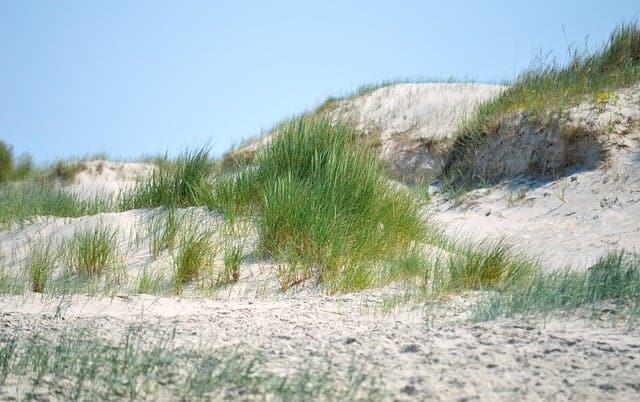
Sand can have both positive and negative effects on plant health, depending on how it is used and the type of soil it is mixed with. Here are some of the key impacts of sand on plant health:
Positive Impacts
- Improved Drainage: Sand can improve soil drainage, which is essential for healthy plant growth. When soil is poorly drained, it becomes saturated, and roots that are deprived of oxygen soon die. Sand can help to prevent this by increasing the space between soil particles and allowing water to drain away more easily. Horticultural sand is particularly effective at improving drainage and is often used in potting mixes for container plants.
- Structure and Texture: Sand can also improve the structure and texture of soil, making it easier for roots to penetrate and allowing air and water to move more freely. This can be particularly beneficial for plants that prefer drier soil conditions, as sand can help to prevent waterlogging and root rot.
Negative Impacts
- Nutrient Depletion: Sand does not contain many nutrients, so if it is used in large quantities, it can deplete the soil of essential nutrients that plants need to grow. This can result in stunted growth, poor yields, and other problems. To avoid this, it is important to mix sand with other soil amendments, such as compost or fertilizer, to ensure that plants have access to the nutrients they need.
- Water Retention: While sand can improve drainage, it can also reduce water retention in soil. This can be a problem for plants that require consistent moisture levels, as the soil may dry out too quickly. To counteract this, it is important to mix sand with other soil amendments, such as peat moss or vermiculite, which can help to retain moisture.
Beach Sand in a Seaside Garden
Seaside gardens are beautiful and unique, but they require some special considerations when it comes to plant selection and maintenance. One of the most important factors to consider is the soil. Seaside gardens are often located in areas with sandy soil, which can be challenging for some plants.
However, using beach sand in a seaside garden can be a great way to create a beautiful and functional landscape.
Sand for Gardening
Sand is a common component in many garden soils, and it can be a useful addition to a seaside garden as well. Beach sand is typically a mixture of different types of sand, including fine and coarse grains, as well as shells and other organic materials.
When mixed with other types of soil, beach sand can improve drainage and aeration, which can be especially beneficial in areas with heavy rainfall or poor drainage.
Erosion
One of the main challenges of gardening in a seaside environment is erosion. Beach sand can help to prevent erosion by providing a stable base for plants to grow in. It can also help to absorb water and prevent runoff, which can be important in areas with heavy rainfall or storms.
Choosing the Right Plants
When using beach sand in a seaside garden, it’s important to choose plants that are well-suited to the environment. Salt-tolerant plants, such as succulents, sea oats, and beach grasses, are good choices for seaside gardens. These plants are adapted to the salty, sandy soil and can thrive in these conditions.
Maintenance
Maintaining a seaside garden can be challenging, but using beach sand can make it easier. Beach sand is low-maintenance and requires less watering than other types of soil. However, it’s important to monitor the soil moisture levels and water as needed to ensure that plants are getting the right amount of water.
Conclusion

While sand can be a useful component in gardening mixes, using beach sand for plants is not recommended. Beach sand contains high levels of salt that can harm plants, and it has difficulty retaining water and nutrients needed for healthy plant growth.
It is important to note that not all sand is created equal. Coarse sand, such as silica sand, can be suitable for rooting cuttings, as it allows for good drainage. However, it is important to ensure that the sand is not too dry, as it may leak out of pots through drainage holes.
When it comes to soil, adding sand can help to improve drainage and aeration, which can be important for plants that prefer drier soil. However, it is important to ensure that the soil is not too sandy, as this can lead to poor water retention and nutrient deficiencies.
Water is also an important consideration when using sand in gardening. Sandy soil may require more frequent watering than other types of soil, as water can drain quickly through the sand. It is important to monitor soil moisture levels and adjust watering accordingly.
Frequently Asked Questions
Can you use beach sand for potting mix?
Yes, beach sand can be used as an additive to potting mix to provide texture and improve drainage. However, it is important to note that pure beach sand may contain high levels of salt, which can harm some plants. It is recommended to mix the beach sand with other soil components to dilute the salt concentration.
Is beach sand safe for house plants?
Beach sand may not be the best option for house plants, as it can contain high levels of salt and other minerals that can harm the plants. It is recommended to use a soilless potting mix or a potting mix that is specifically formulated for house plants.
What are the best plants to grow in beach sand?
Only a handful of plants can grow in pure beach sand due to its high salt content caused by the ocean. Some plants that can tolerate beach sand include beach grass, sea oats, and some succulents. However, it is important to note that even these plants may require additional nutrients and soil amendments to thrive.
Can you use beach sand for succulents?
Succulents can grow in beach sand, as they are adapted to grow in arid, nutrient-poor soils. However, it is important to mix the beach sand with other soil components to dilute the salt concentration and provide additional nutrients.
Is beach sand acidic or alkaline?
The pH of beach sand can vary depending on the location and the type of sand. In general, beach sand tends to be more alkaline due to the presence of shell fragments and other minerals. It is recommended to test the pH of the beach sand before using it in gardening.
Can beach sand be used on lawns?
Beach sand may not be the best option for lawns, as it can contain high levels of salt and other minerals that can harm the grass. It is recommended to use a soil that is specifically formulated for lawns, or to mix the beach sand with other soil components to dilute the salt concentration.

Hey, I’m Lisa and I’ve been an avid gardener for over 30 years. I love writing, talking and living in the garden! Feel free to connect with me on my socials below

